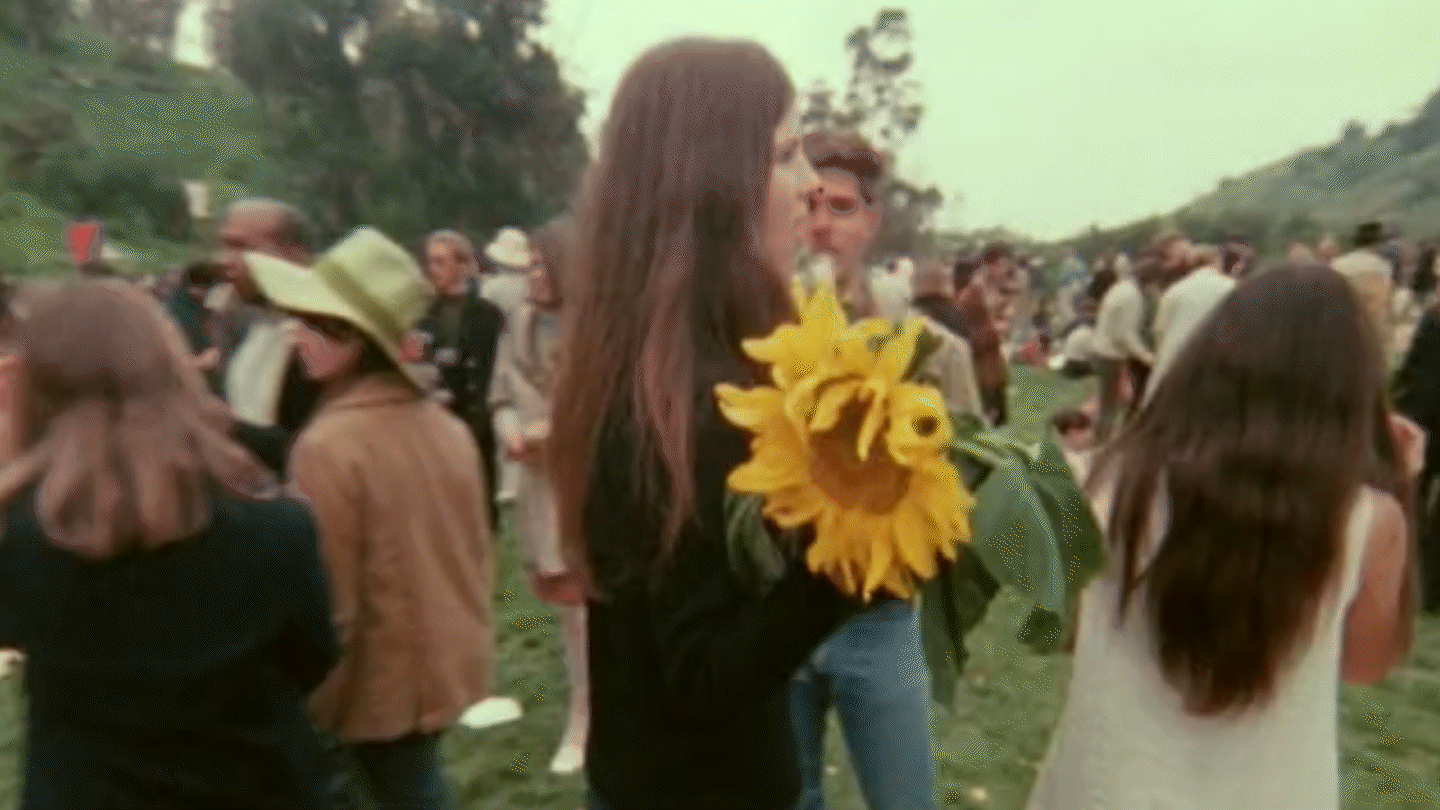
Hippies and anti-war demonstrators protest.
As American troops continued to land in Vietnam, the phrase “make love, not war” rang out at anti-war protests across the States. This was the ‘Summer of Love’ of 1967 – a time when the middle classes on both sides of the Atlantic were mobilising in trippy fashions to promote free love, flower power, and an end to violence and conscription.
With their colourful clothes and passion for peace, the “hippies” actively disrupted the values imposed by governments in the aftermath of World War Two. Mass consumerism, model homes, and the nuclear family had been advertised as a pathway towards fulfilling the American Dream in the States, while post-war austerity had given way to prosperity in the UK. But the anti-materialist hippies rejected conformity to the work ethic and values of their parents’ generation.

Visitors dancing at a music festival.
Instead, they favoured ideas of openness and tolerance, and a meaningful existence beyond established western traditions.
Music was central to hippie values – and its increasing presence at public events only amplified the visibility of the community. As London’s Portobello Road and Carnaby Street became lined with shoppers wearing kaftans and floral blouses, Pink Floyd brought kaleidoscopic oil lamp light shows to the Roundhouse. In the US, meanwhile, the Haight-Ashbury district of San Francisco became an epicentre for psychedelic rock and folk music – and over 100,000 hippies in bell-bottoms and daisy chains flocked to the neighbourhood in the summer of 1967. For much of the latter group, the main draw was the nearby Monterey International Pop Festival – one of the first rock festivals of its kind. The event featured many Haight-Ashbury artists on the bill alongside The Who and Jimi Hendrix, and the latter guitarist memorably capped off his first performance by setting his own weapon on fire in front of his Marshall stack. This moment would help establish the mythology of the music festival in the public consciousness thereafter.

Jimi Hendrix performs at Isle of Wight Festival.
Like-minded events like Woodstock, the Isle of White Festival, and Glastonbury Festival (which debuted the day after Hendrix’s passing on 18 September 1970) followed, as music burst from packed venues into fields and fairgrounds. The hippies turned up in huge numbers, demanding even greater amplification to supply their huge crowds. The surviving hippie subculture still makes the pilgrimage to Glastonbury’s Stone Circle (and nearby Glastonbury Tor and Stonehenge) year on year. Marshall, meanwhile, has remained a faithful collaborator of the festival for over half a century since its inception.

Woodstock poster and Oz magazine number 5 cover, 'Plant a Flower Child.'
Recommended
All

